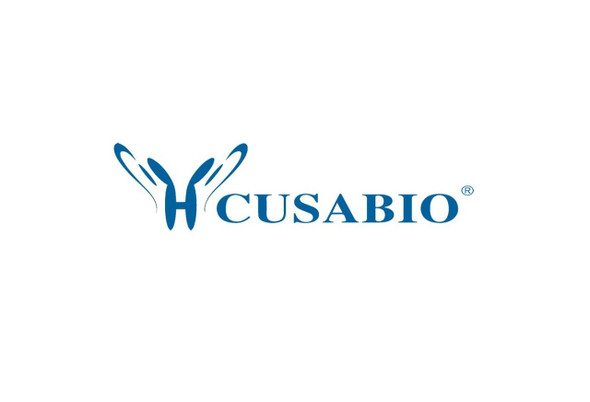Cusabio Human Recombinants
Recombinant Human T-box transcription factor TBX18 (TBX18) | CSB-EP023248HU
- SKU:
- CSB-EP023248HU
- Availability:
- 13 - 23 Working Days
Description
Recombinant Human T-box transcription factor TBX18 (TBX18) | CSB-EP023248HU | Cusabio
Alternative Name(s): T box 18; T box protein 18; T box transcription factor TBX18; T-box protein 18; T-box transcription factor TBX18; TBX18; TBX18_HUMAN
Gene Names: TBX18
Research Areas: Transcription
Organism: Homo sapiens (Human)
AA Sequence: MAEKRRGSPCSMLSLKAHAFSVEALIGAEKQQQLQKKRRKLGAEEAAGAVDDGGCSRGGGAGEKGSSEGDEGAALPPPAGATSGPARSGADLERGAAGGCEDGFQQGASPLASPGGSPKGSPARSLARPGTPLPSPQAPRVDLQGAELWKRFHEIGTEMIITKAGRRMFPAMRVKISGLDPHQQYYIAMDIVPVDNKRYRYVYHSSKWMVAGNADSPVPPRVYIHPDSPASGETWMRQVISFDKLKLTNNELDDQGHIILHSMHKYQPRVHVIRKDCGDDLSPIKPVPSGEGVKAFSFPETVFTTVTAYQNQQITRLKIDRNPFAKGFRDSGRNRMGLEALVESYAFWRPSLRTLTFEDIPGIPKQGNASSSTLLQGTGNGVPATHPHLLSGSSCSSPAFHLGPNTSQLCSLAPADYSACARSGLTLNRYSTSLAETYNRLTNQAGETFAPPRTPSYVGVSSSTSVNMSMGGTDGDTFSCPQTSLSMQISGMSPQLQYIMPSPSSNAFATNQTHQGSYNTFRLHSPCALYGYNFSTSPKLAASPEKIVSSQGSFLGSSPSGTMTDRQMLPPVEGVHLLSSGGQQSFFDSRTLGSLTLSSSQVSAHMV
Source: E.coli
Tag Info: N-terminal 6xHis-SUMO-tagged
Expression Region: 1-607aa
Sequence Info: Full Length
MW: 80.8 kDa
Purity: Greater than 90% as determined by SDS-PAGE.
Relevance: Acts as transcriptional repressor involved in developmental processes of a variety of tissues and organs, including the heart and coronary vessels, the ureter and the vertebral column. Required for bryonic development of the sino atrial node (SAN) head area.
Reference: The DNA sequence and analysis of human chromosome 6.Mungall A.J., Palmer S.A., Sims S.K., Edwards C.A., Ashurst J.L., Wilming L., Jones M.C., Horton R., Hunt S.E., Scott C.E., Gilbert J.G.R., Clamp M.E., Bethel G., Milne S., Ainscough R., Almeida J.P., Ambrose K.D., Andrews T.D. , Ashwell R.I.S., Babbage A.K., Bagguley C.L., Bailey J., Banerjee R., Barker D.J., Barlow K.F., Bates K., Beare D.M., Beasley H., Beasley O., Bird C.P., Blakey S.E., Bray-Allen S., Brook J., Brown A.J., Brown J.Y., Burford D.C., Burrill W., Burton J., Carder C., Carter N.P., Chapman J.C., Clark S.Y., Clark G., Clee C.M., Clegg S., Cobley V., Collier R.E., Collins J.E., Colman L.K., Corby N.R., Coville G.J., Culley K.M., Dhami P., Davies J., Dunn M., Earthrowl M.E., Ellington A.E., Evans K.A., Faulkner L., Francis M.D., Frankish A., Frankland J., French L., Garner P., Garnett J., Ghori M.J., Gilby L.M., Gillson C.J., Glithero R.J., Grafham D.V., Grant M., Gribble S., Griffiths C., Griffiths M.N.D., Hall R., Halls K.S., Hammond S., Harley J.L., Hart E.A., Heath P.D., Heathcott R., Holmes S.J., Howden P.J., Howe K.L., Howell G.R., Huckle E., Humphray S.J., Humphries M.D., Hunt A.R., Johnson C.M., Joy A.A., Kay M., Keenan S.J., Kimberley A.M., King A., Laird G.K., Langford C., Lawlor S., Leongamornlert D.A., Leversha M., Lloyd C.R., Lloyd D.M., Loveland J.E., Lovell J., Martin S., Mashreghi-Mohammadi M., Maslen G.L., Matthews L., McCann O.T., McLaren S.J., McLay K., McMurray A., Moore M.J.F., Mullikin J.C., Niblett D., Nickerson T., Novik K.L., Oliver K., Overton-Larty E.K., Parker A., Patel R., Pearce A.V., Peck A.I., Phillimore B.J.C.T., Phillips S., Plumb R.W., Porter K.M., Ramsey Y., Ranby S.A., Rice C.M., Ross M.T., Searle S.M., Sehra H.K., Sheridan E., Skuce C.D., Smith S., Smith M., Spraggon L., Squares S.L., Steward C.A., Sycamore N., Tamlyn-Hall G., Tester J., Theaker A.J., Thomas D.W., Thorpe A., Tracey A., Tromans A., Tubby B., Wall M., Wallis J.M., West A.P., White S.S., Whitehead S.L., Whittaker H., Wild A., Willey D.J., Wilmer T.E., Wood J.M., Wray P.W., Wyatt J.C., Young L., Younger R.M., Bentley D.R., Coulson A., Durbin R.M., Hubbard T., Sulston J.E., Dunham I., Rogers J., Beck S.Nature 425:805-811(2003)
Storage: The shelf life is related to many factors, storage state, buffer ingredients, storage temperature and the stability of the protein itself. Generally, the shelf life of liquid form is 6 months at -20?/-80?. The shelf life of lyophilized form is 12 months at -20?/-80?.
Notes: Repeated freezing and thawing is not recommended. Store working aliquots at 4? for up to one week.
Function: Acts as transcriptional repressor involved in developmental processes of a variety of tissues and organs, including the heart and coronary vessels, the ureter and the vertebral column. Required for embryonic development of the sino atrial node (SAN) head area.
Involvement in disease: Congenital anomalies of kidney and urinary tract 2 (CAKUT2)
Subcellular Location: Nucleus
Protein Families:
Tissue Specificity:
Paythway:
Form: Liquid or Lyophilized powder
Buffer: If the delivery form is liquid, the default storage buffer is Tris/PBS-based buffer, 5%-50% glycerol. If the delivery form is lyophilized powder, the buffer before lyophilization is Tris/PBS-based buffer, 6% Trehalose, pH 8.0.
Reconstitution: We recommend that this vial be briefly centrifuged prior to opening to bring the contents to the bottom. Please reconstitute protein in deionized sterile water to a concentration of 0.1-1.0 mg/mL.We recommend to add 5-50% of glycerol (final concentration) and aliquot for long-term storage at -20?/-80?. Our default final concentration of glycerol is 50%. Customers could use it as reference.
Uniprot ID: O95935
HGNC Database Link: HGNC
UniGene Database Link: UniGene
KEGG Database Link: KEGG
STRING Database Link: STRING
OMIM Database Link: OMIM









